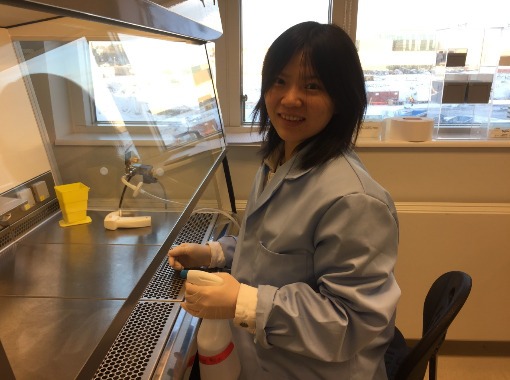Málstofa Lífvísindaseturs - Metabolic definition of breast EMT models via a global (phospho)proteomic approach

Læknagarður
stofa 343
Málstofa Lífvísindaseturs Háskóla Íslands fimmtudaginn 8. mars kl. 12:25 í stofu 343 Læknagarði
Fyrirlesari: Qiong Wang, doktorsnemi hjá Óttari Rólfssyni, Kerfislíffræðisetur, Læknadeild Háskóla Íslands
Titill: Metabolic definition of breast EMT models via a global (phospho)proteomic approach
Ágrip: Breast cancer is the most prevalent cancer in women around the world and patients with breast cancer metastasis have a lower five-year survival rate. Epithelial to mesenchymal transition (EMT) is fundamental to cell development and a key feature in the progression of many cancers. However, it remains poorly understood. The genomic changes that take place during EMT are well defined; however, their impact on protein function and metabolism of EMT remains unclear. With the rapid development of mass spectrometry, sample preparation techniques and computational data analysis, proteomics has improved dramatically. We proposed to explore a global proteomics strategy to identify potential targets and to define changes that occur in proteome during EMT in breast epithelium through exploration of the EMT cell model, D492/D492M. D492 is a basal-like epithelial cell line with stem cell properties. D492M is the mesenchymal counterpart of D492 after 3D co-culturing D492 cells with endothelial cells (Sigurdsson et al., 2011). The proteomic data obtained from this EMT model was thoroughly analyzed via GO term enrichment analysis, Reactome and PATHER pathway enrichment analysis. There were 3093 proteins identified in total, with 2779 found in D492 and 2841 found in D492M. Moreover, 124 proteins were found unregulated at least 2 fold in D492M while 125 proteins were found at least 2 fold down regulated in D492M comparing to D492 (student’s t test, p < 0,05). Based on the KEGG pathway database, 33 differently expressed metabolic enzymes with at least 2-fold difference (student‘s t test, p < 0,05) was identified. All 33 enzymes were thoroughly studied, and 11 targets were chosen for siRNA knockdown study, namely, DGKA & PKCɑ, PDGFD & PDGFRβ, ASS1, SQRDL, PGM2L1, PGP, CYP1B1, GALE and UGDH. The proteomic dataset obtained has proved the power of global proteomics strategy in identifying promising targets and it has provided new insights into the EMT process regarding these selected targets. At last, a phosphoproteomic approach to study metabolic/signaling pathways related to EMT and functional assays for siRNA knockdowns of specific target genes will be the next steps.
Qiong Wang



